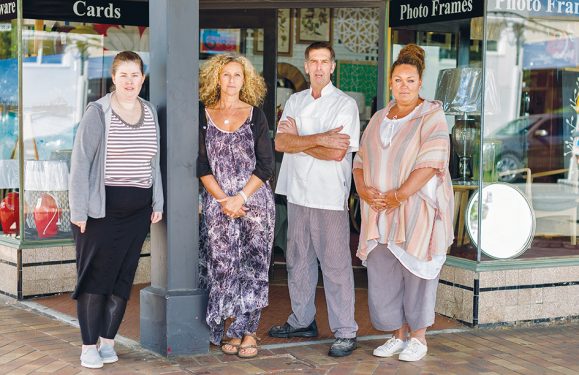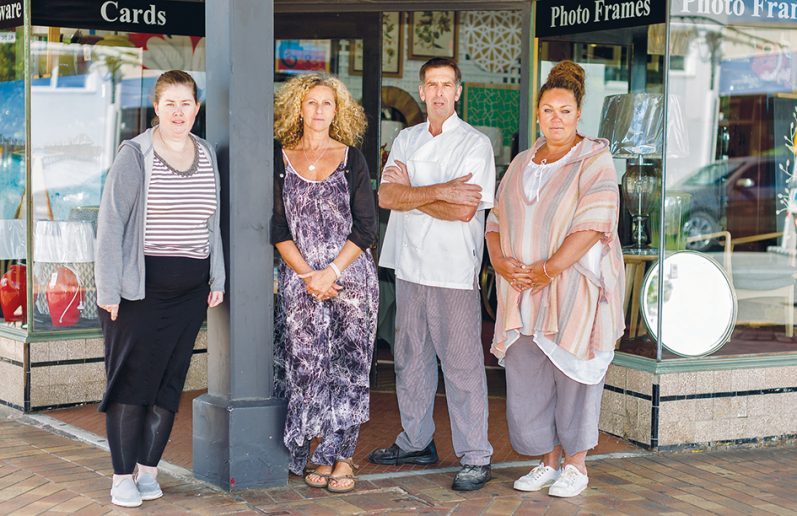
MORNINGTON’S Main St traders are being asked their views on the “iconic” Wednesday market.
A survey is being sent out this week to 400 traders by Mornington Chamber of Commerce, and Mornington Peninsula Shire to assess the market’s impacts and economic benefits on Main St.
The survey asks if the market is fulfilling its role of attracting shoppers and visitors to the town, if its stalls compete too rigorously with established shops, if it creates a desirable atmosphere, where it should be located, whether customers who don’t come to Main St on a Wednesday because of the market would come another day, and whether car parking is being adversely affected.
It also asks traders if they are aware that, if the market was no longer in Mornington, “there is a high likelihood that another town, such as Mt Eliza, Mt Martha or Sorrento, would introduce a Wednesday market”.
It reminds traders they are free to use footpath space in front of their shops for their own outdoor trading.
Few doubt the market has been a success since it opened in September 1979 and it is credited with reviving trade in the sleepy strip from the days when some traders closed on Wednesday afternoons through lack of business.
It attracts visitors to the town, is credited with lifting shops’ sales figures and has helped create an “arty crafty” atmosphere. It has also generated income for the chamber and allowed it to promote the town and its features.
The motto from day one – supposedly – was that all goods should be homemade or homegrown.
But now, a small group of traders is questioning the market’s relevance and the “myth” that market days are established traders’ best sales days.
To push for change, Annie Zaicz, of Zen Living, and Sue Calcott, of Pomme, have written to the chamber to “express our feelings” about market days.
“We asked for the market to be reassessed: for stalls duplicating what is sold in any shop on Main St to be closed, for trading hours to be shortened, for market days to occur only on Wednesdays and – best of all – for the market to be relocated to a venue like Mornington Park, just as the farmers’ market has been,” Ms Calcott said.
“This would immediately address the problem of parking and remove the obstacle of foot traffic that is market-focused, and make parking and accessing the shops easier for other shoppers.
“We love that Main St has a rich and colourful history, but the picture today is dramatically and excitingly different. Let’s embrace it and give people cause to enjoy Mornington for many reasons, and not dwell on what was the drawcard 10, 20 or 30 years ago.”
An underlying cause of concern is that permanent traders are paying high rents and employing staff to create a bustling shopping precinct, while $50 stallholders reap the rewards at key times.
Chamber president Judy Edwards said there was “no general push” to change the Wednesday market’s long-standing business model. “I am sure most traders favour the market as it is,” she said.
“It is only a handful who, perhaps, want to see some changes.”
Ms Edwards said she was “very confident” the market was fulfilling traders’ expectations, and that the survey results would verify this view.
Chamber marketing manager Kim Rowe described the market as “iconic”. She said the survey – to go out Monday 2 February – would help generate a “well-rounded perspective” of the market, and that any remodelling would be “a slow and steady process”.
“There will be no snap decisions,” she said. “Our role is to ensure the traders receive the benefits of the market and the survey will help identify them.”
Main St market manager Jeni Doherty acknowledged that some traders “have concerns” about market days, but said that “as a tourist attraction it brings lots of people to the town”.
Ms Calcott said extended trading hours and additional markets on key trading days – like Saturdays in December and street festival days “regardless of when they fall, even Christmas Eve itself” were undermining permanent traders’ sales.
She said other markets all over the peninsula each weekend meant there was no shortage of market opportunities, either for stallholders or for dedicated market shoppers.
Also, the “enormous range of stylish, handmade, locally designed and Australian-focused works available in shops up and down Main St” meant the strip already catered for what was once the province of the market stalls.
“The older-style shops have been updated, redesigned and offer almost everything that Melbourne shoppers can expect to find in some of the most creative retail hubs, such as Elwood, Hawksburn, High St Armadale, and Northcote/Fitzroy,” she said.
“In keeping with the younger demographic now living in Mornington, Mt Martha and Mt Eliza, the shops, cafes and recently opened wine bars all reflect the times and, sadly, this does not include what is on offer at the Wednesday market – nor do they need the lure of the market to attract shoppers and visitors to Mornington.
“Almost any retailer on Main St will concur that Wednesdays are busy with foot traffic but not with shoppers. They are generally older folk, day trippers out for a day to get some bits and bobs from the market and to enjoy lunch or a coffee.
“The real shortage of parking space is exacerbated on market days to the extent that regular shoppers say they keep away on Wednesdays unless they really have to come in.
“On Christmas Eve this was absolutely disastrous for shops that were all set up with extra staff only to find that the pavements were clogged with stalls and shopping trolleys. The true, hard-core shoppers, who are often men on Christmas Eve, were unable to get close to the street until later in the day.”
Ms Calcott said men needed “very little to be dissuaded from shopping at the best of times” and that Christmas Eve overcrowding “was a real issue for many of us”.




